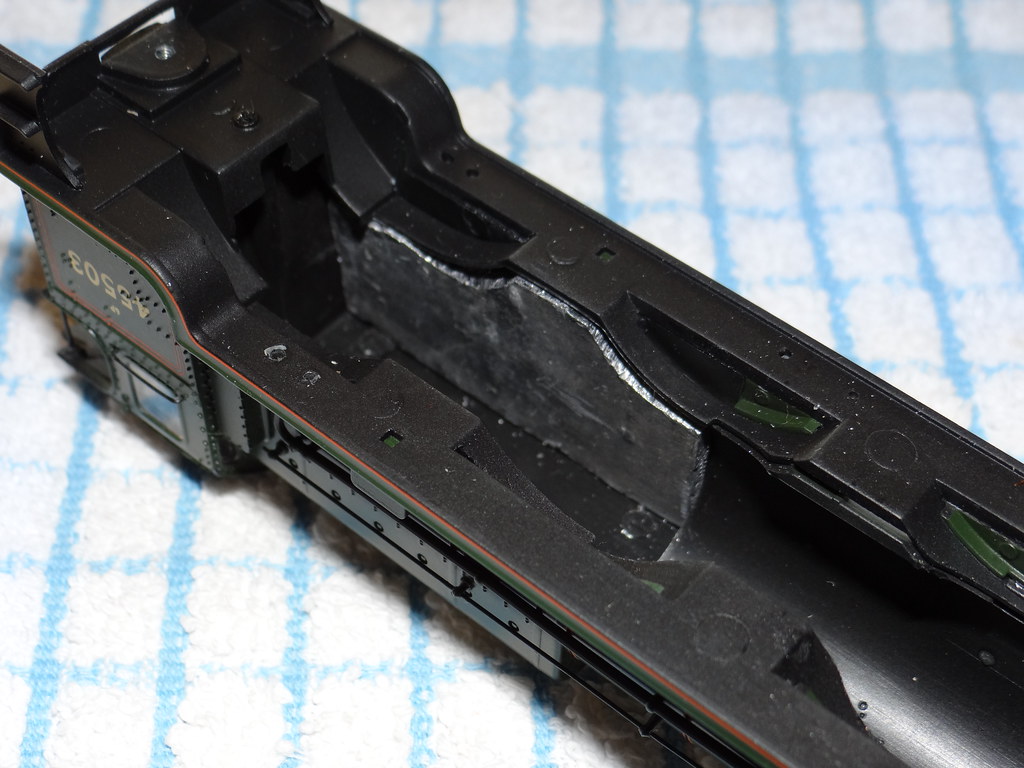No.110 Six up – Bachmann Baby Scot with BR Mk1s
My last session featured some of my older models of BR (LMR) steam 4-6-0s. On that occasion I had started to strengthen some of my rakes of coaches and had added additional second class BR Mk1s.
Six Up
The Hornby ‘Staniers’ are relatively light weight. The
Bachmann ‘Portholes’, despite some criticism of the bogie design, I think are
free running. Adding an extra Bachmann Mk1 to the ‘Staniers’ and the
‘Portholes’ did not cause any haulage problems on my gradients.
My Bachmann Mk1s appear to be heavy and rather sluggish
coaches. A rake of six Mk1s was maybe a ‘coach too far’ for some of my 4-6-0s.
With a good run the train would manage the gradient but the performance was
rather frantic. I would clean the coach wheels and check the bearing cups with
my reaming tool.
The old split chassis type Bachmann Jubilees weigh in around
308 gm. Mine have quite a good haulage capacity. The new Bachmann Jubilees have
a space inside the boiler for the DC chip and their weight reduces to around
280gm. If you are like me and are not fitting a DC chip then it is relatively
straightforward to add some lead and bring the weight up to a little over 310 gm.
This weekend I have been playing with a Bachmann Baby Scot
or as otherwise known, an unrebuilt Patriot. From my old train spotting books
the unrebuilt engines were disappearing fast in 1961. Looking at the numbers I
must have seen Upperby based engines during visits to Carlisle. Visits to
Warrington and Chester must have provided opportunities to see Edgehill
(Liverpool) and Longsight (Manchester) shedded engines. The unrebuilt engines
were classified ‘6P5F’, the same as the majority of the Jubilees. I am guessing
that they would have been used on semi-fast passenger turns and fitted
freights.
Bachmann Baby Scot
The prototype engine has a huge firebox. Some time ago I
took a look inside the model and yes there appears to be plenty of space around
the motor for extra ballast.
Filling the fire box
I made a paper pattern and used this to shape some pieces of
lead for the firebox sides (nominally 21 x 44 mm).
Reverse (top) showing indents for handrail fixings and
channel to accommodate seam in plastic moulding
The fixings for the handrail knobs protruded inside the
firebox on my model. I carved a couple of indents in the lead to clear the
handrail fixings and also the join in the plastic boiler moulding.
Lead sides to firebox
Adding lead to the firebox sides increased the weight of the
Bachmann Patriot to around 315 gm. Sadly my model was still struggling with six
Bachmann Mk1s. I would need to add some more lead.
Kit of parts – mark II
This time I added a piece of lead to the front of the
firebox (nominally 15 x 25 mm) and another piece to the top (nominally 20 x 25
mm).
The works
Despite the cavernous size of the old ‘Fowler’ fire box it
would appear that a lot of the height is utilised by the Bachmann motor so the
top piece of lead needed some shaping with a file to keep it clear of the motor
and wiring.
Lead lined fire box
My model now turned the scales at 330 gm. Performance was
enhanced – perhaps only modestly – but sufficient for my needs. I have posted a Youtube video, part of which shows the
train climbing my 36 inch radius, 1 in 56 curved reversing loop.
I have not touched the space in the smoke box reserved for
the DC chip. Neither have I tampered with the front bogie spring which from
experience with other Bachmann models could well be lifting the front pair of
driving wheels. For the moment it works for me.
Some more pictures of Bachmann coaches:
Bachmann Mk1s and Portholes
Finally an attempt at a panoramic shot showing two six coach
semi fast trains.
Panarama?











Comments